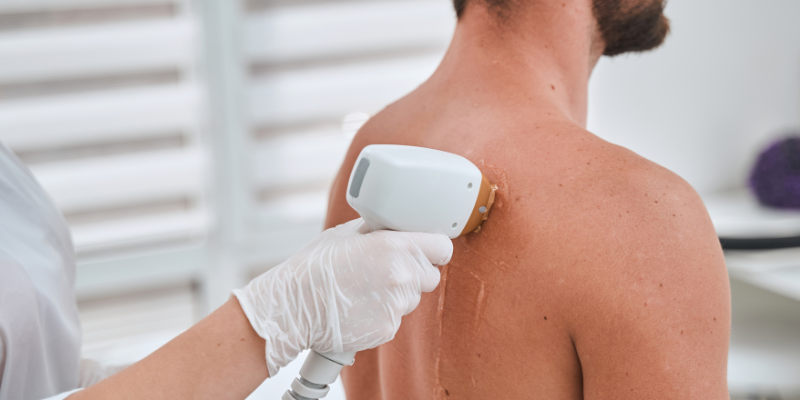Port-a-Cath Insertion/Removal
Port-a-Cath Treatment

Treatment Range Hospital in Hyderabad offers safe and expert care for the insertion and removal of Port-a-Cath devices. A Port-a-Cath (or port) is a small medical device placed under the skin, typically used for long-term intravenous treatments such as chemotherapy, antibiotics, or frequent blood draws. Our experienced surgical and oncology teams ensure a smooth procedure using sterile techniques, minimal discomfort, and a quick recovery time.
We follow a comprehensive and patient-focused approach for both Port-a-Cath placement and removal. The procedure is done under local or general anesthesia in our state-of-the-art operating suites, with imaging guidance to ensure precision. After placement, our team provides complete post-operative care instructions, ensuring the device functions safely for the duration of treatment. When therapy is complete, our team performs a safe and simple removal, again prioritizing patient comfort and infection prevention.
If you are looking for Port-a-Cath insertion or removal in Hyderabad, Treatment Range Hospital is one of the trusted centers offering advanced care, affordable pricing, and skilled professionals. With a focus on safety, infection control, and long-term access management, we help patients undergoing complex treatments receive seamless care every step of the way.
- Your 6 - Phase health Process
Your Complete Port-a-Cath Insertion/Removal Treatment Plan Journey
🩺 Phase 1: Indication & Evaluation
- Long-term chemotherapy
- Frequent blood tests or IV medications
- Difficulty with regular IV access
- Medical history review
- Blood tests (clotting profile, CBC)
- Discussion of procedure risks and benefits
🧪 Phase 2: Pre-Procedure Preparation
- You may be asked to fast for 6–8 hours
- Blood tests may be repeated to ensure safety
- Medications like blood thinners may be paused (as advised by your doctor)
- Consent form will be signed after explaining the procedure
🛠️ Phase 3: Port-a-Cath Insertion Procedure
- A small incision is made on the chest (usually upper chest wall)
- The port is placed under the skin, and a catheter is inserted into a large vein (usually near the neck)
- The catheter is connected to the port
- The incision is closed with sutures or skin glue
🏥 Phase 4: Post-Insertion Care & Recovery
- The area will be bandaged; minor swelling or bruising is normal
- Pain medication may be prescribed for 1–2 days
- You’ll receive instructions on how to care for the site
- The port is usually ready for use within 24–48 hours
💉 Phase 5: Port Maintenance & Monitoring
- It must be flushed regularly (usually every 4–6 weeks if not in use)
- Accessed only by trained professionals using sterile technique
- Watch for signs of infection (redness, swelling, fever)
- Report any blockage, pain, or unusual symptoms
🔄 Phase 6: Port Removal
- Removal is done as a minor outpatient procedure
- Local anesthesia is used
- The same incision site is reopened, and the port and catheter are gently removed
- The incision is closed with sutures and covered with a bandage
- Recovery is quick; stitches are removed in 7–10 days (if not dissolvable)
Insurance Support










- Why Choose Us
Why patients trust us with their care
- Patient Testimonials
Patient stories of care and recovery










- Frequently Asked Questions
Helping you understand Our healthcare
A Port-a-Cath (also known as an implantable port or port) is a small medical device placed under the skin, usually in the chest, that connects to a major vein. It allows easy, repeated access to the bloodstream for:
Chemotherapy
IV medications or fluids
Blood draws
Long-term treatment
You may need a Port-a-Cath if:
You’re receiving chemotherapy or long-term IV therapy
You have poor veins or require frequent blood draws
You want to reduce discomfort from repeated needle sticks
Complications are rare but may include:
Infection at the insertion site
Port blockage or clotting
Catheter movement or damage
Allergic reaction or skin irritation
Yes! Most people return to daily activities quickly. With proper care, a Port-a-Cath can last several months to years without problems.
You can work, travel, and exercise normally (with precautions)
Wear loose clothing over the port area for comfort
Let medical staff know you have a port before any procedure